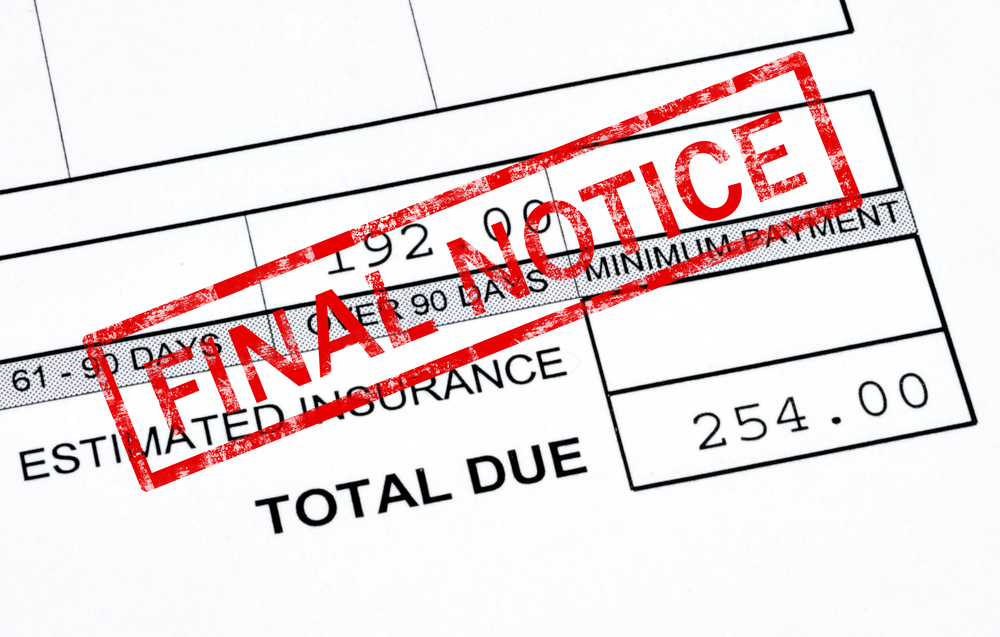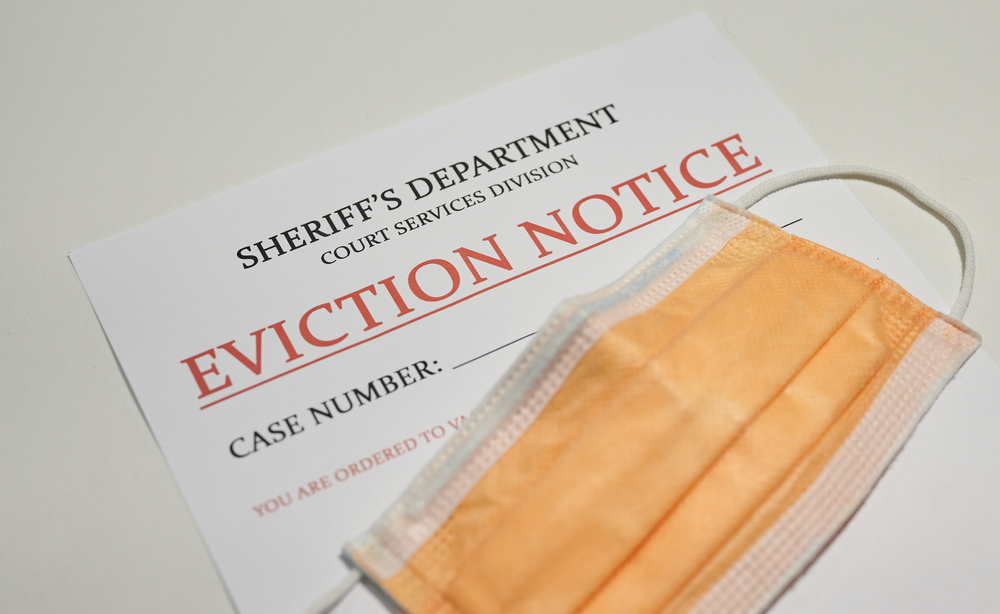Study: State courts overrun by debt collectors
State civil courts across the country have increasingly become tools for bill collectors as consumers face odds stacked against them when they try to navigate an often confusing system, usually with no legal representation, according to a recent study from the Pew Research Center.

The stakes are incredibly high for people who may have fallen behind in debt and don’t know their legal rights. They can find their wages garnished and their bank accounts and other belongings seized. Sometimes, they may even wind up behind bars.
Before the pandemic hit, for example, one of the busiest places in Baltimore City Court was the part that deals with debt collection, according to an attorney who works in the system.

The affidavit judgment docket, as it’s known, is where bill collectors can seek judgments against city residents who have run into hard times, said Amy Hennen, director of advocacy for Maryland Volunteer Lawyers Service, which provides free legal help to some of the debtors who appear.
On a typical Tuesday or Wednesday morning, the court will have about 100 cases on its docket. And maybe 20 or 30 debtors appear, hoping to talk to the bill collector’s attorney or present a case, Hennen said.
The only busier docket, Hennen said, is landlord/tenant court, where evictions are considered.
RELATED: Small claims court: It may be the answer if you know the rules
RELATED: Know your rights when it comes to shocking medical bills
The Baltimore docket’s heavy debt collection caseload is not unusual.
Debt collection cases increasing in volume
Although the details of how cases are processed differ, courts around the nation have found ever-increasing shares of their dockets taken over by debt collection, according to the Pew report, which found that defendants in these cases had lawyers less than 10 percent of the time.
“People sued for debts rarely have legal representation, but those who do tend to have better outcomes,” says a Pew summary of its report, “How Debt Collectors Are Transforming the Business of State Courts.” “According to studies in multiple jurisdictions, consumers with legal representation in debt claim are more likely to win their cases outright or reach a mutually agreed settlement with the plaintiff.”

Study author Erika Rickard said it’s appropriate for courts to remain neutral and reach decisions based on the facts. However, because of lack of legal representation for defendants, judges often don’t have the needed facts.
The report noted that debt collection had increased from representing 1 in 9 state civil cases in 1993 to 1 in 4 by 2013, with limited available data indicating the trend has continued.
Rickard, who is Pew’s project director for Civil Legal System Modernization, said she had at least partial data from 12 states for 2018. Of those states, nine of them reported debt collection as their most common kind of civil case.
Consumers not using courts for their legal issues
This comes at a time when consumer debt has been on the rise. Before the full effect of the COVID-19 pandemic took hold, the Federal Reserve Bank of New York reported, household debt was more than $14 trillion in the first quarter of 2020. That was after 23 consecutive quarters of increases.
At the same time, fewer consumers are using the courts for civil cases, with caseloads decreasing more than 18% between 2009 and 2017. Researchers haven’t identified why this is. But Pew researchers say it’s not because citizens lack legal problems.
In 2018, residents of more than half of American households reported experiencing at least one legal issue that could have been addressed in court.
Overall, the Pew report found data difficult to come by. And in fact, it recommended better data collection and analysis.
Process confusing for consumers
The typical debt collection case, according to Pew, involves a company that buys delinquent debt from creditors and sues individuals to collect on the debts. These debts are always less than $10,000 and can involve unpaid medical bills, credit cards, car loans and other types of consumer credit, not including mortgages or rent.
In Baltimore, creditors don’t even need attorneys to appear to prevail in the majority of debt collection cases, Hennen said. Most of the time, debt collectors just submit affidavits and receive favorable court rulings, Hennen said.
Attorneys can make a difference
Lawyers from the volunteer service can identify issues the defendants would never know about, Hennen said. For example, debtors whose sole income is Social Security and who have no significant assets are essentially collection-proof, Hennen said.
They don’t have anything the bill collectors can seize or attach. So, while they may get a judgment, it will be worthless.
One such client was Colleen Spriggs, who said she ran into debt after caring for her ailing father and mother until both died.
Spriggs, 63, worked in security for a hospital and took family leave at one point when she retrieved her father from another state and brought him to her home. She went back to work, but the physical toll of caring for her parents left her disabled with back problems.
She had to leave work. She was without income for two years.
She applied for Social Security Disability Income and was waiting for that to come through when she was served by a bill collector for a furniture store. She had purchased a mattress and had made at least 10 payments before she missed two.
After missing the second payment, she was summoned to court.
“That’s when I met (Hennen),” Spriggs said “I told her my situation and she informed me about a program they had for people in my situation.”
Spriggs provided information about her financial status, showing she had no assets and no income, except for the Social Security she was awaiting.
“I didn’t have anything,” she said. “All of that was exhausted in taking care of my parents. I was a single parent myself.”
Not only was Hennen able to help with the mattress bill by getting that case dismissed, but she also helped Spriggs deal with some other debts.
Working with the other side
In such cases, the volunteer attorneys will talk to the bill collectors’ attorneys. Sometimes, the plaintiffs’ attorneys agree they will never collect on the judgment. In other instances, the plaintiffs will just dismiss their cases.
“An individual would never be able to get that result for themselves,” Hennen said. “Usually, we have at least one client a week that we’re potentially reaching out saying it’s what we call a hardship situation where a person is non-collectible.”
Hennen described the case of another of her clients, a woman in her 50s, who had cosigned a bail bond for a relative. The cost of a bail bond is 10 percent of the amount of bail. And in this case, with a $50,000 bond, the bail bond company was owed $5,000.
The client wrongly thought the relative she had cosigned for was paying that money. So, when she was summoned to court, she was stuck.
Hennen said bail contracts are often hastily drawn up in the middle of the night to get family members out of jail. It’s not unusual for these contracts to have “strange, perhaps illegal clauses.”
That was the case with this client. An attorney with Hennen’s organization noticed the contract had an illegal clause. And they were able to get the bill collector to dismiss the case against the defendant.
Neither of those two women would have gotten those favorable results without an attorney, Hennen said. “When defendants have attorneys, their results are much better.”
Patchwork of reform
Rickard, author of the Pew study, said some courts are taking steps to provide information to debtors, such as the law that bars garnishment or collection of income from Social Security. This information might be provided through web portals or handouts or legal clinics, Rickard said.
Armed with such information, consumers can better represent themselves to get a fair result.
But it’s not consistently provided. Like other reforms, it’s part of a patchwork.
Another reform is to make debt collectors include adequate information in paperwork sent to consumers to ensure the consumers understand their case.
It’s not uncommon for consumers to think the paperwork isn’t valid, Rickard said, when debt has been purchased by a third party. In these instances, consumers might not take a summons seriously, believing it’s a bogus matter. This may cause them to discard summonses and not appear in court.
When debtors don’t show up, judges typically issue a default judgment, giving debt collectors the legal ability to garnish wages and seize assets.
The Pew study found that available data shows that more than 70% of debt collection lawsuits end in default judgments.
These judgments can create extreme problems for consumers, who may find themselves owing accrued interest and court fees that can exceed the original amount they owed. Sometimes, they wind up behind bars.
Rickard said she didn’t have data on how many people are incarcerated as the result of a debt collection case. “We do know civil arrest warrants are the law on the books in 44 states,” she said.
Hennen said most creditors in Baltimore no longer seek arrest warrants, known as body attachment orders. The way the process works is after receiving a judgment against a debtor, a collector may ask the debtor to come to court to explain their finances and bring tax statements, bank statements and other documents.
If the debtor fails to appear for this court hearing, the creditor may seek a body attachment order.
Hennen said her organization has worked to raise awareness around this issue. One problem is that the debtor may not be aware of the court summons because the wrong person may have received service. Sometimes, it’s sent to a former address, for example.
Because of this, the courts issued a rule change requiring proof that the debtor has personally received service. Hennen said she doesn’t think Baltimore City courts have issued a body attachment order in the past year.
But she noted courts are different. And those kinds of orders may be issued elsewhere.
12 states make changes
Between 2009 and 2019, 12 states have made changes either through legislation or court rules to help courts meet the needs of litigants in debt collection matters, according to Pew.
These changes include:
- Ensuring all parties are notified about lawsuits.
- Requiring debt collectors to demonstrate that the defendant owes the debt and the plaintiff owns the debt.
- Making sure to enforce time limits on the right to sue for debt.
Hennen said the volunteer attorneys in her organization don’t have the time or the resources to help all the people who need them. She estimated they can help about 25% of those debtors who appear in court or about 10% of all the defendants on the docket.
Of those cases they do represent, Hennen estimated they are able to substantially help about 80% of the time. In every instance, she said, they can at least provide advice to help debtors navigate their options, including possibly filing for bankruptcy.
Recommended reform
The Pew report recommends initial steps states can take to improve how they handle debt collection cases:
- Track data to better understand what is happening with these lawsuits and how the courts can appropriately help litigants.
- Review state policies, rules and practices to identify ways to help litigants effectively present their cases.
- Modernize the court system to ensure it provides relevant and timely information about procedures to all parties, even those who are not represented by attorneys.
“We have observed that state court systems’ processes and procedures have remained largely unchanged,” Rickard said. “The system was built by lawyers for lawyers. … Individuals without lawyers have more difficulty participating.”
Contact Elaine Silvestrini at Elaine@legalexaminer.com. Follow her on Twitter at @WriterElaineS.

















